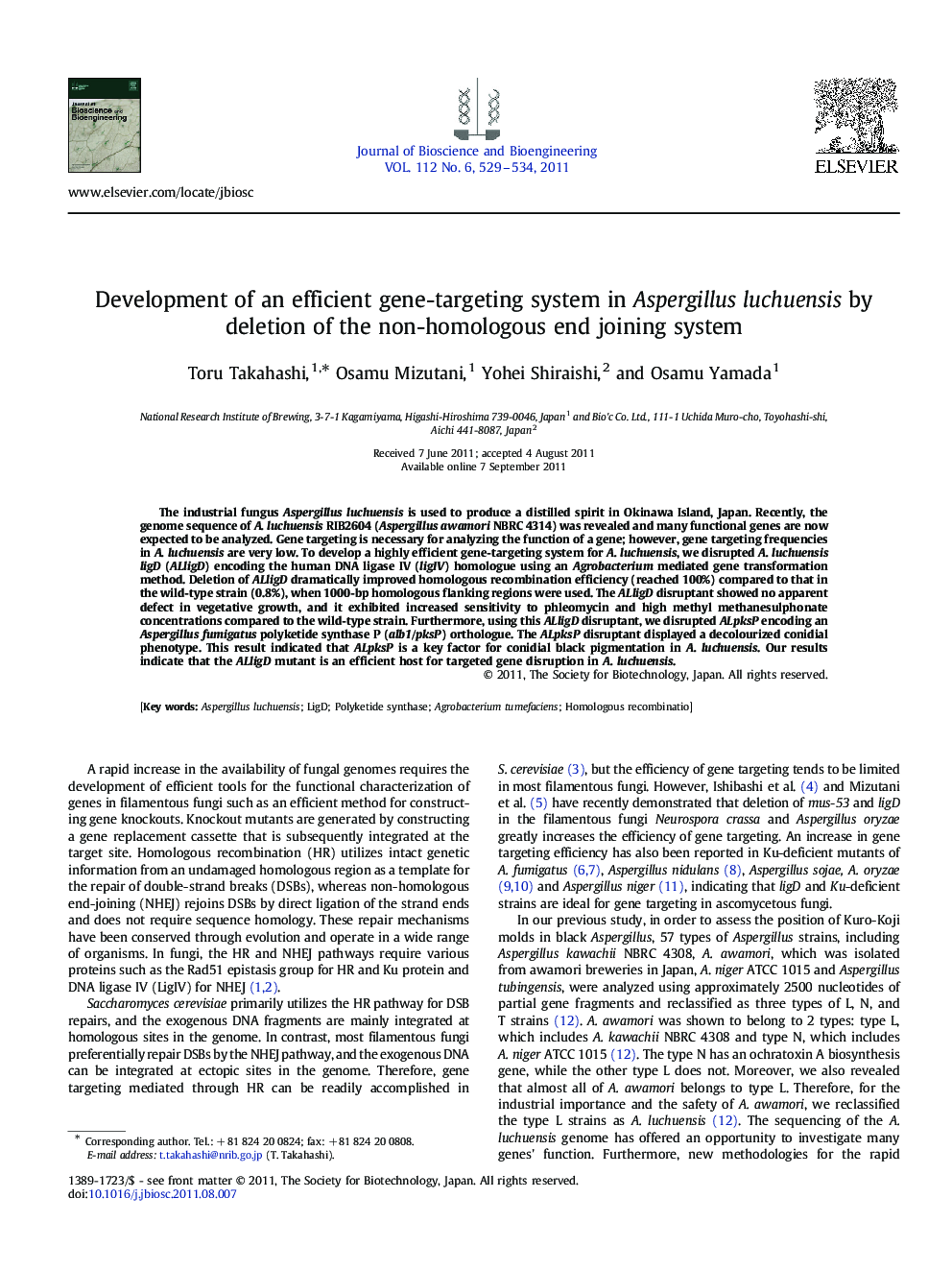| کد مقاله | کد نشریه | سال انتشار | مقاله انگلیسی | نسخه تمام متن |
|---|---|---|---|---|
| 20927 | 43198 | 2011 | 6 صفحه PDF | دانلود رایگان |

The industrial fungus Aspergillus luchuensis is used to produce a distilled spirit in Okinawa Island, Japan. Recently, the genome sequence of A. luchuensis RIB2604 (Aspergillus awamori NBRC 4314) was revealed and many functional genes are now expected to be analyzed. Gene targeting is necessary for analyzing the function of a gene; however, gene targeting frequencies in A. luchuensis are very low. To develop a highly efficient gene-targeting system for A. luchuensis, we disrupted A. luchuensis ligD (ALligD) encoding the human DNA ligase IV (ligIV) homologue using an Agrobacterium mediated gene transformation method. Deletion of ALligD dramatically improved homologous recombination efficiency (reached 100%) compared to that in the wild-type strain (0.8%), when 1000-bp homologous flanking regions were used. The ALligD disruptant showed no apparent defect in vegetative growth, and it exhibited increased sensitivity to phleomycin and high methyl methanesulphonate concentrations compared to the wild-type strain. Furthermore, using this ALligD disruptant, we disrupted ALpksP encoding an Aspergillus fumigatus polyketide synthase P (alb1/pksP) orthologue. The ALpksP disruptant displayed a decolourized conidial phenotype. This result indicated that ALpksP is a key factor for conidial black pigmentation in A. luchuensis. Our results indicate that the ALligD mutant is an efficient host for targeted gene disruption in A. luchuensis.
Journal: Journal of Bioscience and Bioengineering - Volume 112, Issue 6, December 2011, Pages 529–534